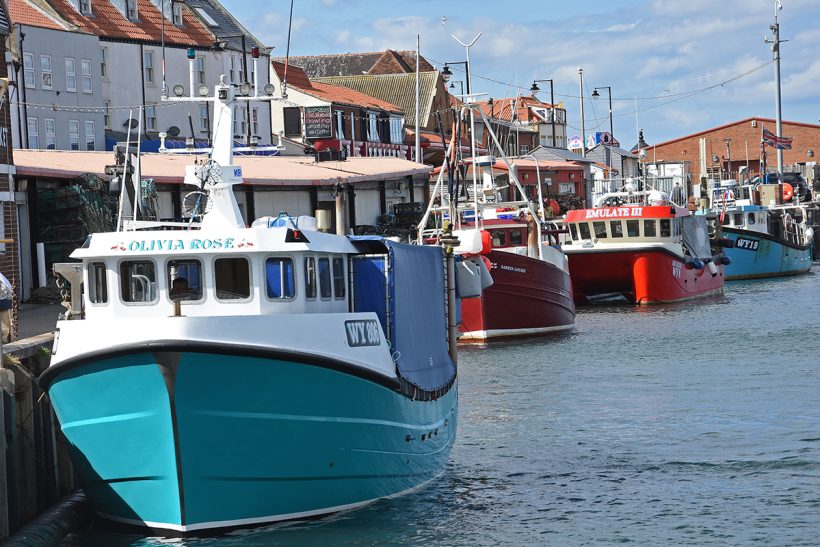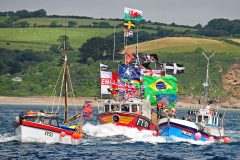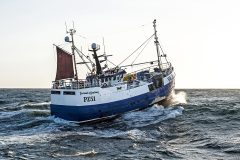This mainly pictorial feature, using a selection of photographs taken in a 36-hour period last month, gives an insight into fishing activity at Bridlington, Scarborough and Whitby. David Linkie reports.
Above: Potting boats berthed along the fishmarket quay at Whitby.
With an annual catch value of over £16m, the Yorkshire coast continues to maintain its proud fishing tradition, achieved against a background of continual challenge and changes.
Adapting to change, enforced by regulations and the loss of fishing opportunities, stemming mainly – but not exclusively – from the EU and the CFP, has been an essential requirement for a generation of fishermen in Yorkshire (in common with their counterparts in many other parts of the UK).
Slowly but surely, fishing methods and expertise, that historically underpinned coastal communities have been eroded almost to the point of no return. Long-lining, netting and trawling on inshore hard ground, which together with other traditional, local, seasonal fisheries brought a vitally important balance, have been lost.
Today, brown and velvet crab, lobsters, Nephrops, scallops and whelks, rather than previous mainstays like cod, haddock and whiting, dominate catches landed into Bridlington, Scarborough and Whitby by local and visiting vessels.
While demand from the numerous fish and chip shops in these coastal towns, which are a powerful magnet for visitors eager to sample the local delicacy, remains as high as ever, in all likelihood the key ingredient for their meals was probably sourced from Peterhead (if not frozen at sea), rather than being bought on the local markets as was the case up to a decade or so ago.
At the time the photographs for this feature were taken, AIS showed a number of French trawlers fishing off Flamborough Head. While these grounds were once favoured by skippers of the strong fleets of keel boats based at Bridlington, Scarborough and Whitby, today the complete absence of any remaining trawlers of this class means that EU boats have freedom to roam, as they often do.
Only time will tell to what extent this present situation will change following the UK’s withdrawal from the London Fisheries Convention. The development of a small but viable fleet of trawlers fishing off the Yorkshire coast, crewed by future generations of local fishermen, delivering catches for which there is proven local market demand, would be a superb achievement in years to come.
In the meantime, in terms of the local fleet, fishing activity is totally dominated by potting boats, which, depending on their size and location, fish from the low water mark up to 60 miles offshore.
The next few weeks are expected to see the seasonal summer lobster fishery move into top gear. In recent years, catches of lobsters from the inshore grounds have reached previously unseen levels. These highlight the benefits that have accrued from long-running V-notching schemes and increases in MLS requirements, now enhanced by the regulatory use of pot escape hatches.
Recent weeks have also seen increased landings of prawns from the Silver Pit grounds, which continue to attract a relatively small number of visiting twin-rig trawlers from Fraserburgh during the early summer, together with a couple of locally-owned vessels.
Much closer inshore, the traditional licensed netting season for salmon and sea trout, which started at the beginning of June, has already run two-thirds of its course before the short season comes to a close again at the end of August.
While the above is intended as a general introductory overview of fishing activity between North Yorkshire and Flamborough head, the three main harbours of Bridlington, Scarborough and Whitby each have their own distinct variations to the general theme.






